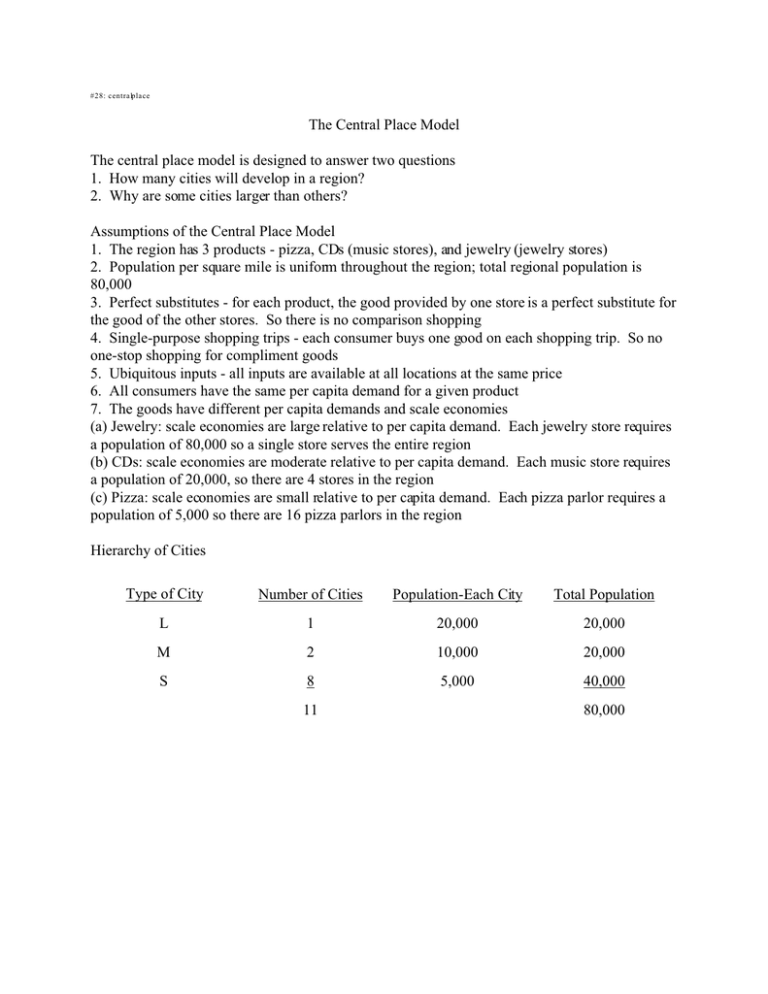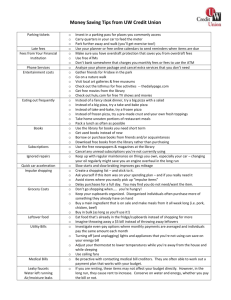The Central Place Model
advertisement

#28: centralplace The Central Place Model The central place model is designed to answer two questions 1. How many cities will develop in a region? 2. Why are some cities larger than others? Assumptions of the Central Place Model 1. The region has 3 products - pizza, CDs (music stores), and jewelry (jewelry stores) 2. Population per square mile is uniform throughout the region; total regional population is 80,000 3. Perfect substitutes - for each product, the good provided by one store is a perfect substitute for the good of the other stores. So there is no comparison shopping 4. Single-purpose shopping trips - each consumer buys one good on each shopping trip. So no one-stop shopping for compliment goods 5. Ubiquitous inputs - all inputs are available at all locations at the same price 6. All consumers have the same per capita demand for a given product 7. The goods have different per capita demands and scale economies (a) Jewelry: scale economies are large relative to per capita demand. Each jewelry store requires a population of 80,000 so a single store serves the entire region (b) CDs: scale economies are moderate relative to per capita demand. Each music store requires a population of 20,000, so there are 4 stores in the region (c) Pizza: scale economies are small relative to per capita demand. Each pizza parlor requires a population of 5,000 so there are 16 pizza parlors in the region Hierarchy of Cities Type of City Number of Cities Population-Each City Total Population L 1 20,000 20,000 M 2 10,000 20,000 S 8 5,000 40,000 11 80,000



